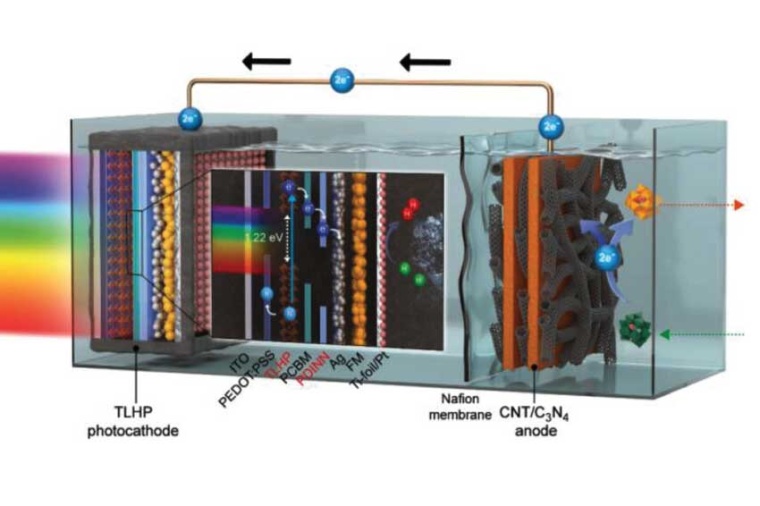Enhancing stability and efficiency of perovskite solar cells
Dramatically increased long-term stability of tin-lead PSCs.
A team of researchers from the School of Energy and Chemical Engineering at UNIST, jointly led by professors Sung-Yeon Jang, Jungki Ryu, and Ji-Wook Jang, in collaboration with professor Sang Kyu Kwak from Korea University, have achieved remarkable advancements in the stability and efficiency of perovskite solar cells. Their groundbreaking work not only paves the way for the commercialization of perovskite solar cells (PSCs), but also offers significant potential in green hydrogen production technology, ensuring long-term operation with high efficiency.


Perovskite solar cells (PSCs) have garnered attention due to their reduced toxicity and broad light absorption capabilities, making them highly promising for photovoltaic applications. However, the presence of inherent ionic vacancies in tin-lead halide perovskites (TLHPs) has posed challenges, leading to accelerated device degradation through inward metal diffusion.
To address this challenge, the research team developed a chemically protective cathode interlayer using amine-functionalized perylene diimide (PDINN). By leveraging its nucleophilic sites to form tridentate metal complexes, PDINN effectively extracts electrons and suppresses inward metal diffusion. The novel solution-processed PDINN cathode interlayer has showcased remarkable performance in stabilizing TLHP-based photovoltaic (PV) and photoelectrochemical (PEC) devices.
The PV device achieved an impressive efficiency of 23.21 %, with over 81 % retention after 750 hours of operation at 60 °C, and more than 90 % retention after 3,100 hours at 23±4 °C. Additionally, the TLHP-based PEC devices, coupled with biomass oxidation, exhibited a record-high bias-free solar hydrogen production rate of 33.0 mA cm−2, approximately 1.7-fold higher than the target set by the US Department of Energy for one-sun hydrogen production.
Their innovative design of the cathode interlayer has successfully demonstrated the immense potential of TLHPs for efficient and stable photoconversion.
“We have dramatically increased the long-term stability of tin-lead PSCs,” explained Prof Jang. “Our goal is not only to convert light energy into electrical energy but also to develop eco-friendly methods for producing basic chemicals, such as hydrogen, which form the foundation of various industries.”
Reference: M. Al Mubarok, Y. Choi, R. Mehrotra, et al.: Efficient and Stable Tin–Lead Perovskite Photoconversion Devices Using Dual-Functional Cathode Interlayer, Adv. Energy Mater. 14(3), January 2024; DOI: 10.1002/aenm.202302555
most read

Successful conclusion of the IVSM Fall Meeting 2025 in Haikou, China
The 2025 Autumn International Vision Standards Meeting (IVSM) took place from November 3 to 7 in Haikou, Hainan, and attracted over 120 R&D engineers worldwide.

First access for external users to the QSolid quantum computer
The prototype of the QSolid quantum computer was successfully integrated into the JUNIQ infrastructure of the Jülich Supercomputing Center.

Machine Safety 2026: The Five Most Important Trends for Eutomation Engineers
Digitalization and automation continue to drive mechanical engineering forward - and with them, the requirements for functional safety and cyber security are increasing. For automation engineers, this means that machine safety is becoming a holistic concept.

Teledyne Vision Solutions: Camera manufacturer unifies machine vision portfolio
Teledyne combines the various machine vision technologies, including 1D, 2D and 3D cameras, under the umbrella of "Teledyne Vision Solutions".

Qioptiq Photonics becomes Excelitas Germany
The renaming is part of the global consolidation of the Excelitas Group.






